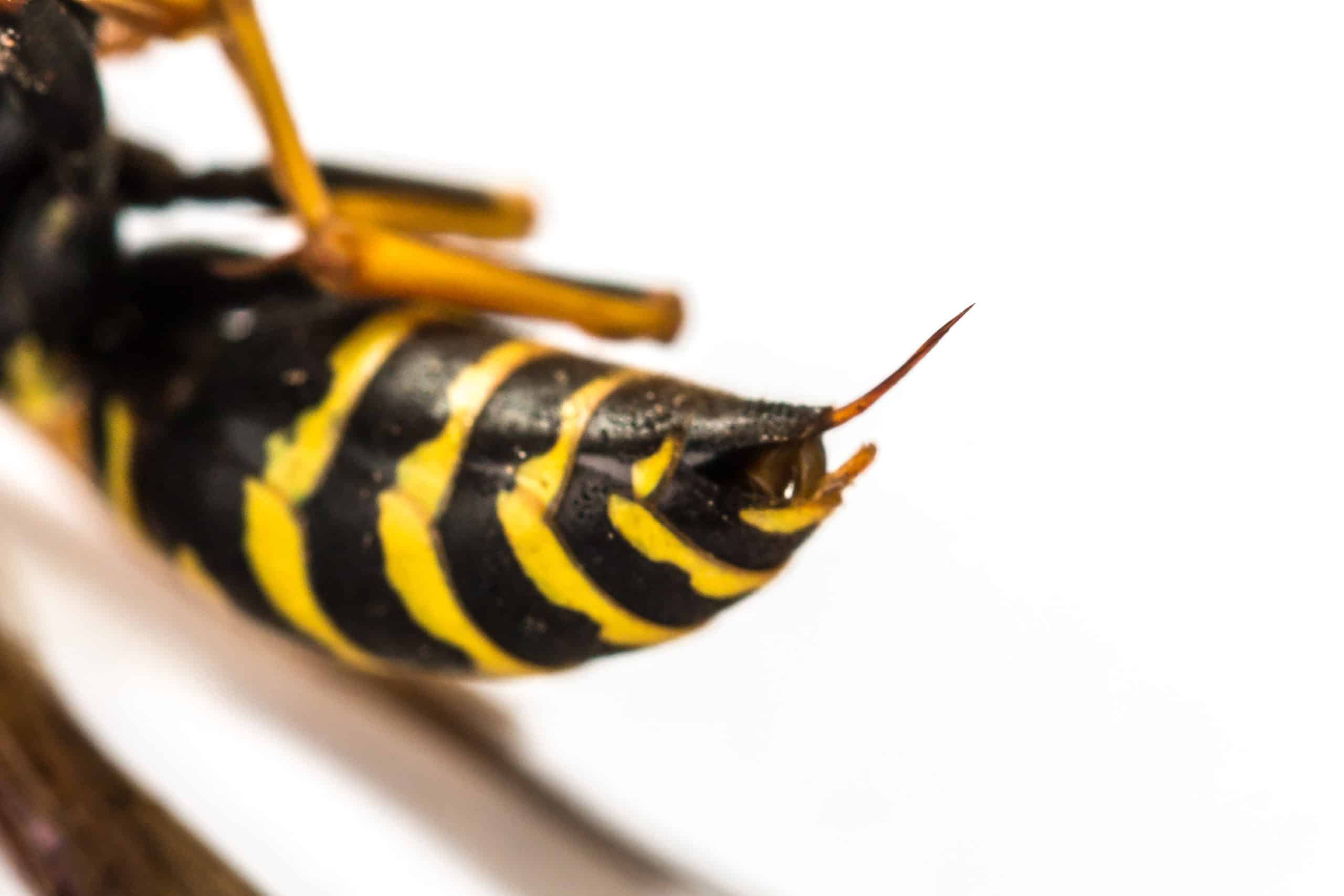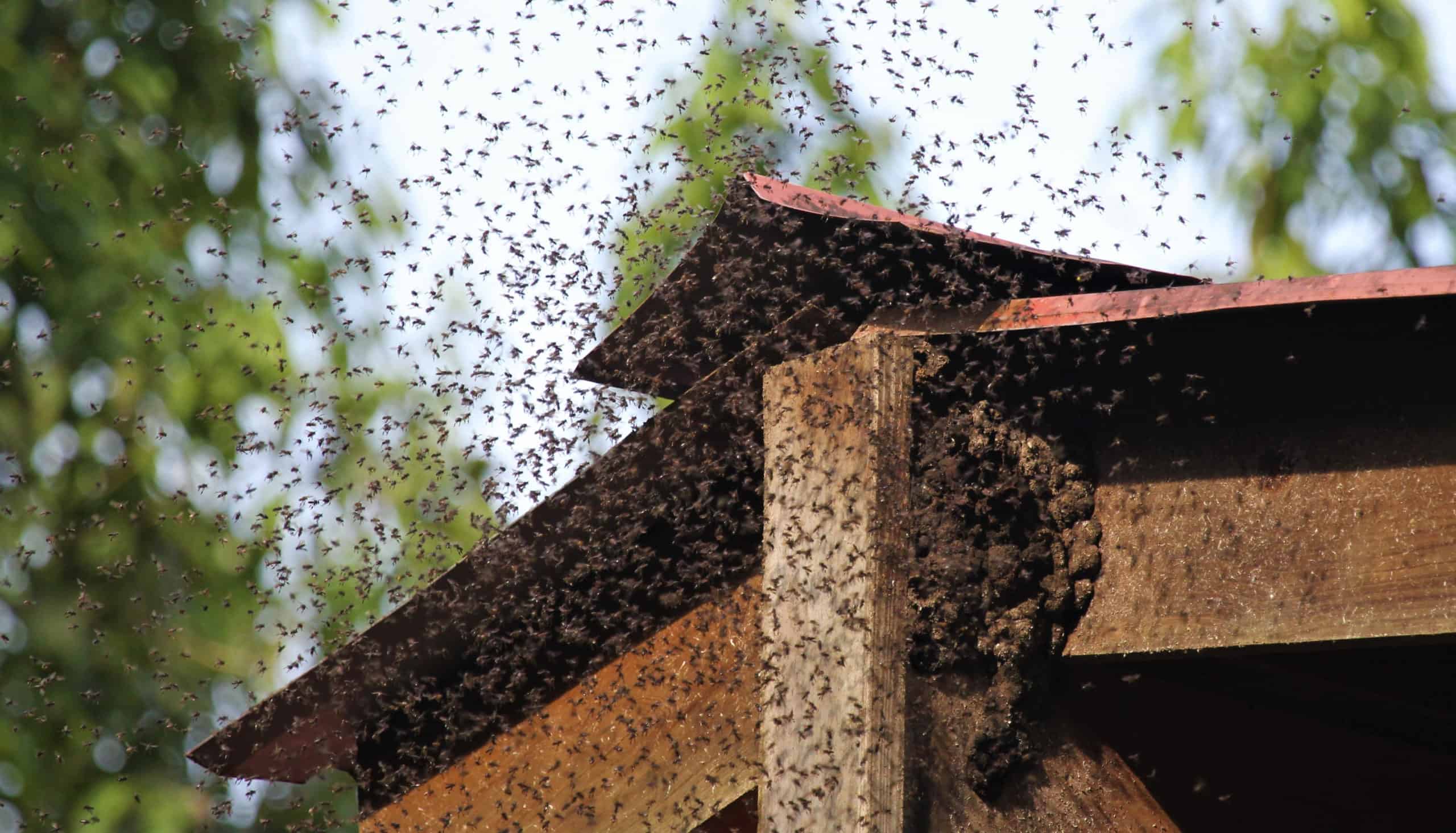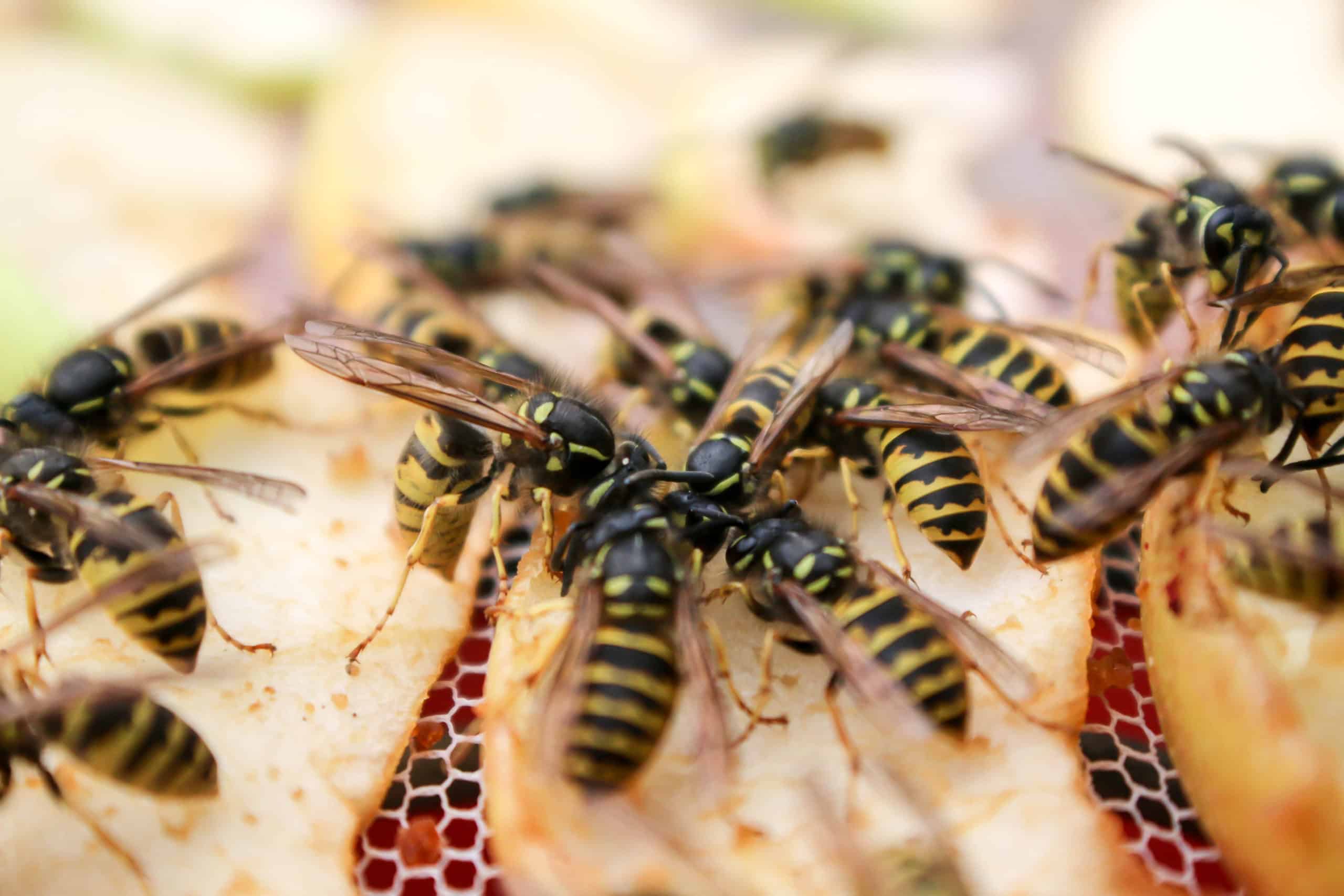Aggressive Attackers
Aggressive Attackers
Wasps 101
Wasps are a type of insect in the order Hymenoptera, which encompasses ants, wasps, bees, hornets, etc. Many species within this order are known for their aggression, and wasps are no exception. Along with being naturally aggressive, they are also predatory and very territorial. In fact, if their nest is destroyed, they will typically return to the same location to rebuild it time after time. These nests are typically constructed under decks, or on the eaves of a home and are shaped like umbrellas with hexagonal cells facing downward.
Due to their territorial nature, wasps are extremely unfond of people getting close to their nests and have a tendency to attack if they feel you’ve gotten within a certain range or if they think you may be a threat. Unlike honeybees who lose their barbed stingers and die after the encounter, wasps have smooth stingers that remain intact and can be used over and over. They are also equipped with a set of powerful mandibles that can be used to bite at their victims.

Awful Attacks
With such powerful pinchers and venomous stingers, wasps are capable of launching severely painful, and even potentially dangerous attacks. In 2018, a man by the name of Stephen Cockroft was actually hospitalized following a vicious wasp attack. After accidentally disturbing a wasps’ nest in his backyard, he was quickly swarmed by the stripped pests and ended up sustaining a total of 42 venomous stings as well as a number of painful bite marks. Technical officer of the British Pest Control Association (BPCA), Natalie Bungay, warns that while, “being stung by one wasp isn’t normally dangerous, 30 or 40 stings could kill you.”
Because of these devastating attacks that wasps are capable of, they were once actually utilized as natural weapons in warfare. In fact, in 332 BC during the Siege on Tyre by Alexander the Great’s army, wasp/hornet nests were hurled towards enemy ships in catapults.
Being such perilous pests, you should always try to be aware of where wasp nests are (or may be) and avoid getting too close. Bungay explains that “a wasp in distress emits a pheromone that sends nearby colony members into a defensive, stinging frenzy.” If you accidentally disturb a nest, or happen to come face to face with an aggressive wasp, be sure to follow these steps to avoid a potentially dangerous confrontation:
- Do not swat or fail your arms. This is a sign of aggression and can cause bees/wasps to attack (if they aren’t already) and can make them more combative if already attacking.
- At the first signs of aggression, run! Remember, even a single distressed wasp means a whole army of them is probably seconds away from swarming you. Get out of there fast!
- DO NOT jump into water for shelter. “The wasps will simply wait for you to re-emerge,” Bungay says. In one case, a swarm of bees continued to wait for several hours for a man, stinging every time he resurfaced for air.

The Importance of Wasp Control
If you come across these aggressive pests in your yard, it is highly recommended that you do not try to combat them on your own. Removing wasp nests properly requires professional intervention to ensure safety. Not only are swarms dangerous, but a singular sting to someone who is allergic to wasps could potentially be fatal, and some chemical treatments for wasps are equally dangerous. lot of store-bought pesticides are highly toxic and can be very detrimental to you, your family, your pets, and even the plants and wildlife in your yard. As an example, in cases where DIY’er have attempted to spray a wasp nest that is located up high, the spray drifted down, showering them in a micro-mist of toxins. Depending on what they were wearing, the detrimental chemicals could enter their eyes, lungs, mouth, and even cover their skin. There have even been cases in which people have been hospitalized for this very reason.
Professional pest abatement with exterminators/pest control technicians keeps you safe, healthy, and ensures that your pest problems are handled quickly and properly. We focus on treating problems at their source and possess all of the proper tools and experience to effectively eliminate problems and prevent further ones from ever occurring. Stay safe, stay pest free, and call us anytime for more information on wasp control in your area.

Citations
8 of the Worst Stinging Insects (2017) SciShow. Available at:
https://www.youtube.com/watch?v=3NHJjEFk32c&t=322s (Accessed: May 2020).
Biswas, J. (2018) What to do in a Bee Attack: 5 Things You Need to Know, ABC News. Available at: https://abcnews.go.com/US/bee-attack-things/story?id=56663013 (Accessed: July 2020).
Davidson, O. (2016) Summer Safety: How to Avoid Bee-Swarm Attacks, Scientific American. Springer Nature America. Available at: https://www.scientificamerican.com/article/summer-safety-how-to-avoid-bee-swarm-attacks/ (Accessed: July 2020).
Vogt, C. (2018) Types of Wasps That Are Very Aggressive, Sciencing. Available at: https://sciencing.com/types-of-wasps-12365156.html (Accessed: September 2020).
Wasp Nests and Bee Hives (2016) SciShow. YouTube. Available at:
https://www.youtube.com/watch?v=kFpLsSwnrNQ (Accessed: April 2020).
What to do if you’re attacked by a swarm of wasps (2018) BBC News. The British Broadcasting Corporation. Available at: https://www.bbc.com/news/uk-england-45272344 (Accessed: March 11, 2021).
Wu, K. (2018) Five Real Life Wasp Superpowers Not in Ant-Man and the Wasp, Smithsonian Magazine. The Smithsonian Institution. Available at: https://www.smithsonianmag.com/science-nature/why-you-should-let-wasp-be-your-hero-today-180969521/ (Accessed: July 2020).

